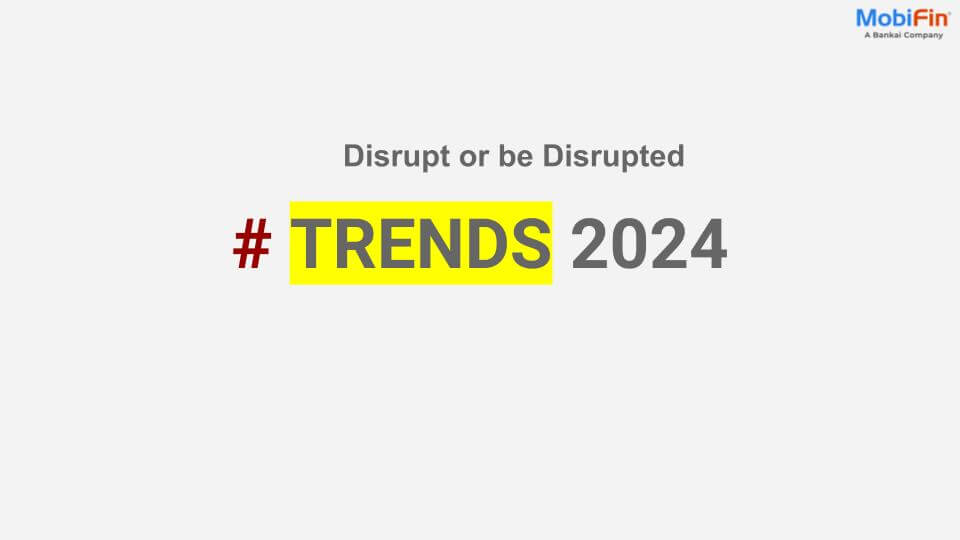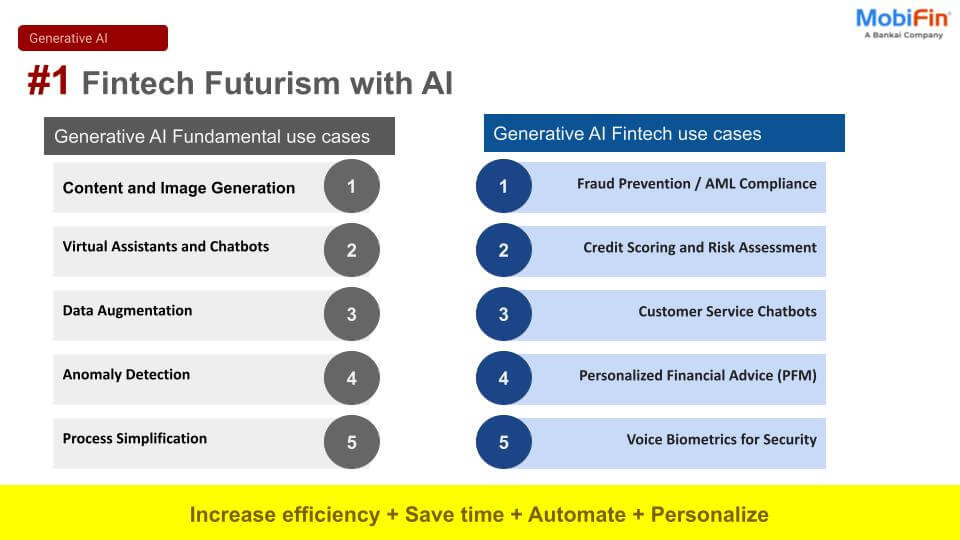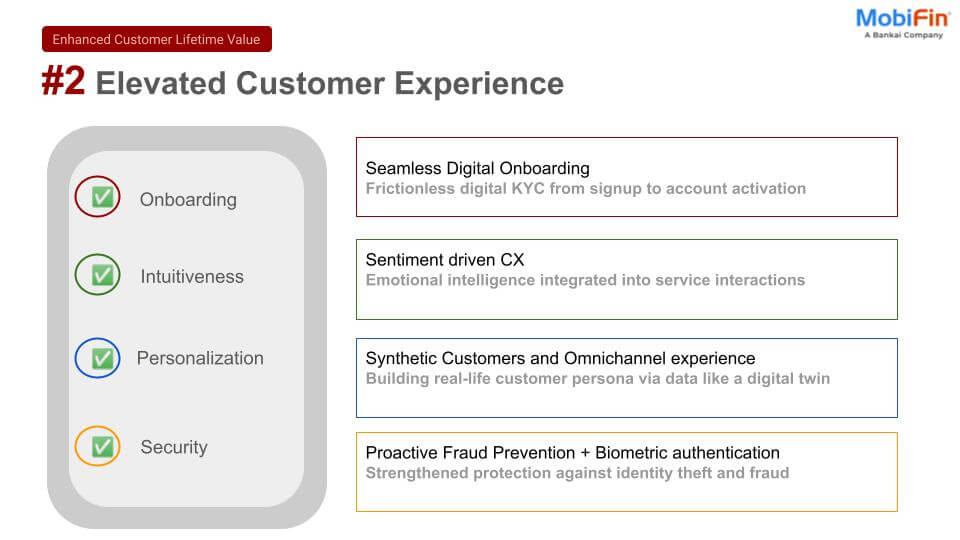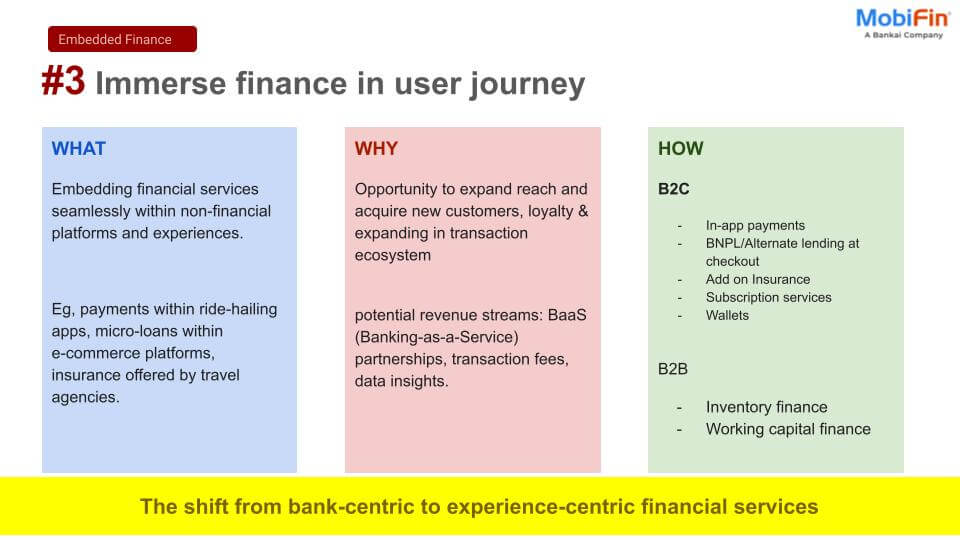Yet, behind the scenes, many banks still struggle to meet these rising expectations. Legacy systems stitched together with stopgap digital layers may have served well in the past, but they simply can’t keep up with the experience economy we now live in.
The harsh reality? Siloed systems and rigid architectures create fragmented journeys, delay innovation, and stifle the one thing banks need most right now: agility.
So, how do banks keep pace with digital-native FinTechs and neobanks, while still protecting trust, compliance, and security? The answer lies in reimagining their very foundations. It’s about rewiring for a digital-first, customer-centric future, and that begins with a composable, modular architecture built for continuous change.
At MobiFin, we believe that future-ready banking needs to be API-first, microservices-driven, cloud-native, and highly extensible by design. In this blog, we’ll unpack what that means, why it matters, and how our composable architecture helps banks deliver unified financial experiences at the speed customers expect.
Why Banks Must Rewire for Agility
The gap between what customers want and what banks can deliver is widening every year. Consumers are used to the seamless, hyper-personalized interactions they get from e-commerce giants and lifestyle platforms, and they expect the same from their bank.
Despite years of digital investments, many banks are still trapped in channel-centric silos, with disjointed customer data and a patchwork of old and new systems. The result? Broken experiences, missed cross-sell opportunities, high servicing costs, and growing disengagement.
Gen Z and millennial customers, in particular, have little patience for friction. They’re more than willing to switch to a digital-first competitor if they feel underserved. Digital challengers are ready to win them over with smarter, more connected journeys.
In an industry where loyalty is increasingly earned through relevance and convenience, banks need to think beyond just adding new channels or features. They must orchestrate consistent, personalized, context-aware experiences across every touchpoint, and they must do it at speed.
That’s precisely where composable architecture comes in.
The Limitations of Legacy Systems
Many traditional banks are built on monolithic core systems that served their purpose in a different era. Adding digital channels on top has helped, but these legacy foundations often struggle to handle the dynamic demands of today’s market.
With a tightly coupled architecture, even small changes can mean long development cycles, costly upgrades, and heavy dependencies across teams. Want to launch a new product? You might be waiting months, or even years, just to push it live. Meanwhile, digital-native competitors are shipping features weekly.
In addition, legacy systems make it hard to get a single view of the customer. Data lives in silos, insights are hard to action, and personalized engagement happens too late, if at all. It’s no wonder that fragmented experiences undermine customer trust and lead to missed revenue opportunities.
Banks can’t afford this inertia anymore. To thrive, they need to break free from outdated constraints and embrace an architecture built for constant evolution.
Introducing MobiFin’s Composable Architecture
At MobiFin, we’ve designed our digital banking platform with one goal in mind: to help banks adapt fast and serve customers better, without being held back by legacy limitations.
So, what does “composable” really mean? In simple terms, it’s an architecture that’s:
- API-first, which means everything connects seamlessly inside and outside the bank for smooth integrations.
- Microservices-driven, breaking down complex functions into smaller, independent services that can evolve rapidly.
- Cloud-native and secure-by-design, which ensures high availability, resilience, scalability, and protection.
- Headless and backend-for-frontend, to deliver consistent, personalized experiences across all touchpoints.
It’s a smarter way to build digital banking: instead of one rigid monolith, you get a flexible ecosystem of components that can be reassembled, scaled, or swapped out as needs change. This empowers banks to innovate faster, localize offerings, integrate third-party services, and roll out new features without massive redevelopment cycles.
A Closer Look at Architectural Virtues
API-First Design
At the heart of MobiFin’s architecture is an API-first approach. This means every function, process, and interaction is exposed through secure, well-documented APIs.
Why does this matter? APIs unlock the freedom to integrate seamlessly with core banking systems, third-party apps, fintech partners, or lifestyle services. They enable banks to become part of larger digital ecosystems, extending value far beyond traditional transactions.
In practical terms, this makes it faster to launch new products, onboard partners, and plug into emerging digital channels. Banks no longer need to rebuild or replicate entire systems just to expand their service offerings.
Microservices-Driven and Modular
MobiFin’s architecture is built on a microservices model. Instead of one massive codebase, we break down core banking functions into independent, reusable services.
Think of microservices as building blocks. Each one, whether it’s onboarding, payments, or loan origination, can be developed, deployed, and scaled independently. So if you want to update the onboarding process, you don’t have to touch payments or other modules.
This decoupled approach dramatically accelerates development cycles. It minimizes risks, reduces downtime, and gives banks the flexibility to respond to changing customer needs in real time.
Headless and Backend-for-Frontend
A major challenge for banks is delivering a consistent experience across multiple touchpoints such as web, mobile, smart devices, or even voice assistants.
MobiFin’s headless design separates the presentation layer (what the customer sees) from the backend systems (where the logic lives). This “backend-for-frontend” pattern ensures you can tailor user interfaces to each channel without duplicating backend development.
The result? Faster rollouts, channel consistency, and more control over the customer journey. Banks can experiment with new digital experiences like a PWA mini-app, a gamified module, or an AI-powered chatbot, without disturbing the entire system.
Cloud-Native and Secure-by-Design
Security and scalability are non-negotiable in banking. MobiFin’s composable architecture is cloud-native from day one, with elastic scalability that lets banks handle spikes in usage without performance dips.
Being cloud-native also means you get continuous updates, built-in resilience, and industry-grade security measures, while staying compliant with local regulations.
When you add it all up, these architectural pillars empower banks to focus on what matters most: delivering value to customers, not wrestling with technical debt.
Turning Architecture into Advantage for Real-World Impact
So, how does this play out in the real world?
Banks using MobiFin’s composable architecture can:
- Launch new products faster by assembling and deploying only the needed components.
- Scale experiences across regions, thanks to localization and modular configurations.
- Offer lifestyle services making the bank a daily destination through a SuperApp
- Experiment safely by testing new features on small user segments before scaling
And with upcoming features like gamified banking journeys and AI-powered financial wellness tools, this composable foundation ensures banks can plug in new innovations without starting from scratch.
Rewire to Win the Digital Banking’s Future
In an age where customers switch banks for better experiences, agility is no longer a nice-to-have; it’s survival.
MobiFin’s composable, API-first, microservices-driven digital banking doesn’t just modernize architecture. It redefines how banks can grow, compete, and delight customers in the experience economy.
Ready to rewire your bank for a digital-first future? Let’s build it together.
Learn more about MobiFin Digital Banking. Request a demo today.













